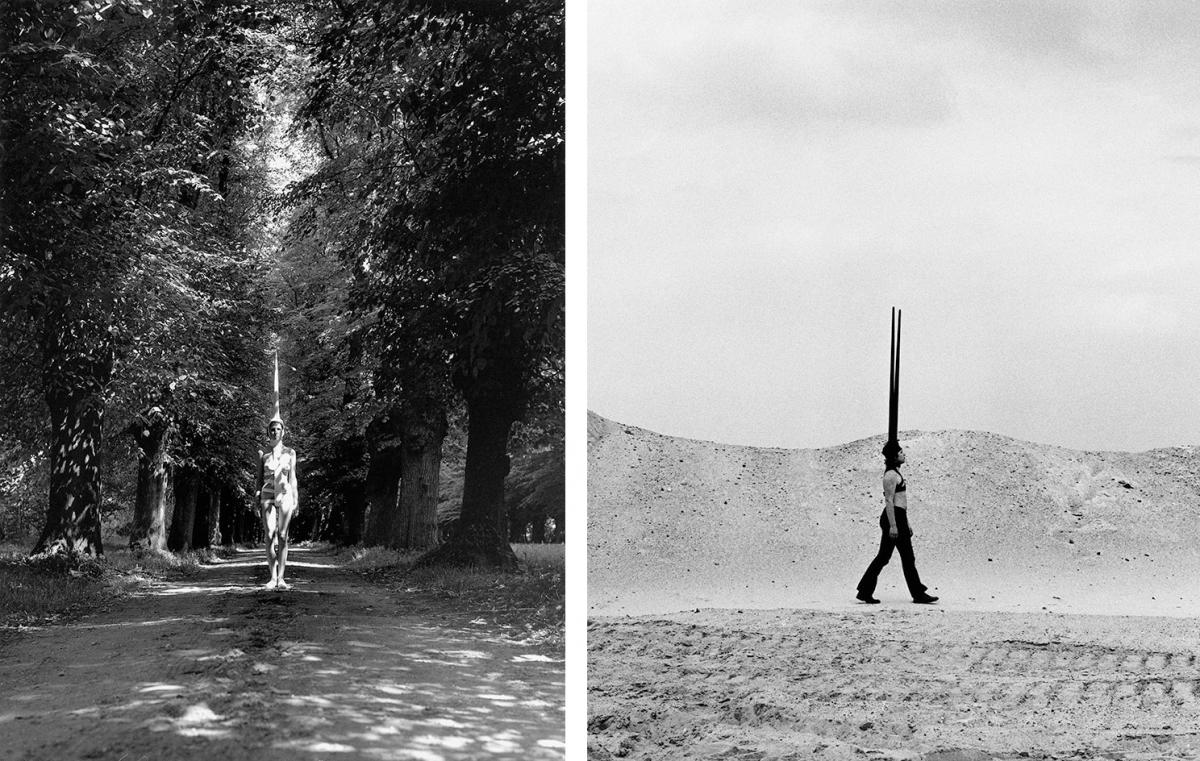Artist Model
Rebecca Horn (Born 1944, Germany)
I am inspired by Rebecca Horn’s visual art practice because I can relate to many of her ideas (i.e. choreography, movement, machines, masks, colour, dancers, element of surprise), and methods such as her performance wearable art. I admire her ability to produce a wide variety of beautiful, striking and unusual art creations.
Many of her artworks are associated with the human body, human emotional state and its relationship with the environment and nature, which also appeals to me. I like how she shares her personal experiences within her art, such as been isolated for a long period of time in a sanatorium in order to recover after severe lung poisoning. Horn makes connections in each work by using politics, humour and playfulness in opposition to a darker and more vulnerable emotional side, and this shows her identity. She begins her process by thinking about and making art from within. Then she uses her body, and what past experiences have happened to her, in order to start creating something.



She uses familiar objects in her mechanical sculptures such as seashells, violins and butterflies, plus she create installations, and also directs films. I like her drawings and paintings for their soft, feathery and delicate touch which gives an appearance of movement.



Horn is known for her performance art which I greatly admire, because as a past performer I understand one needs to have a steely determination and strong mindfulness, and an extreme body awareness to participate. Her wearable body extension sculptures with protrusions and prosthetics relate to early 20th century sculptors: Jacob Epstein and Louise Bourgeois, and their use of prosthetics in their sculpture.

Horn’s work below (‘Unicorn’ and ‘Pencil Mask’: a head sculpture drawing machine) are fascinating and bizarre because they remind me of animal exoskeletons and corsets.

Rebecca Horn. Pencil Mask.
(Drawing Art machine)
Pencil Mask 1972 Rebecca Horn born 1944 Purchased with assistance from Tate Members 2002 http://www.tate.org.uk/art/work/T07847

Rebecca Horn, Finger Gloves (1972) Photo Achim Thode Rebecca Horn / DACS, 2016. 
Untitled 1968-9 Rebecca Horn born 1944 Presented by Tate Patrons 2009 http://www.tate.org.uk/art/work/T12785


Drawing 
Unicorn 1970-2 
Unicorn 1970-2 Rebecca Horn born 1944 Purchased with assistance from Tate Members 2002 http://www.tate.org.uk/art/work/T07842
Bibliography https://www.artsy.net/artist/rebecca-horn https://ocula.com/artists/rebecca-horn/ http://www.tate.org.uk/art/work/T12785 http://www.dreamideamachine.com/en/?p=48068 https://www.tate.org.uk/art/artworks/horn-cockfeather-mask-t07849
Artist Model
Artist duo Fischli and Weiss are admirable for utilizing everyday objects in their art machine (see below). I would like to personally create a smaller version of this at home in my own time.
Our Art Machine group were inspired whilst brainstorming to think about how we could use the domino concept. I wanted to create a sequence for our mechanisms to start to swing, push paint, and rotate and boil water to create steam.
Bibliography: https://www.youtube.com/watch?v=GXrRC3pfLnE
